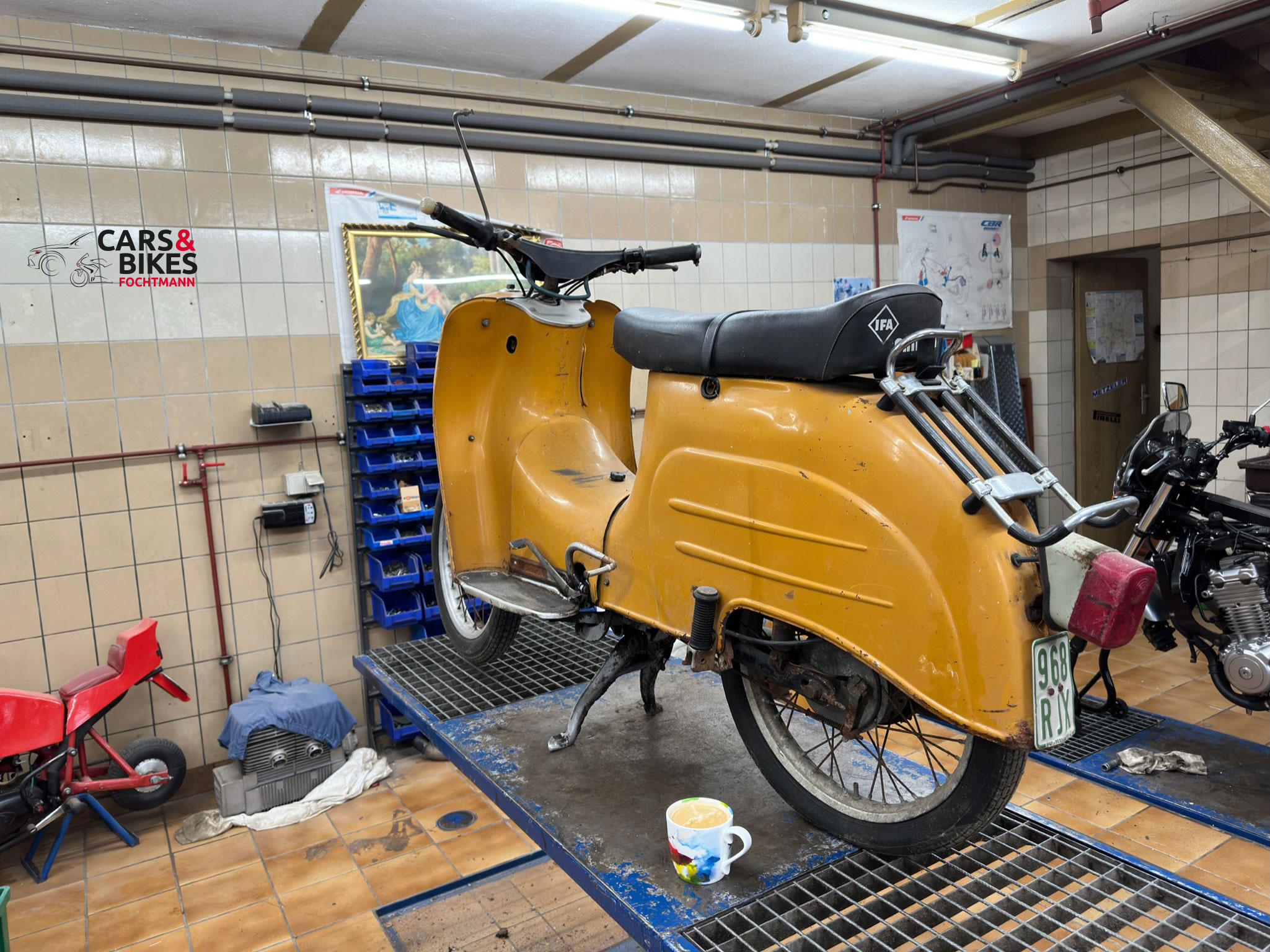The Gold Wing from Honda – what’s happened so far…
The Gold Wing was introduced in 1975by Honda as a 1000cc naked bike and has since evolved into the two-wheeled non plus ultra for the long haul. Generations of developers ensured that it has always remained true to itself. Over the decades, the Gold Wing always gained in size and displacement. In addition, the engineers continually raised the Gold Wing to the next level in terms of luxury, quality and comfort, setting it further and further apart from the competition.
Little side note: Our boss wasn’t even born in the year of publication….
What did the 2000s bring for the Gold Wing?
In 2018 the GL1800 and Gold Wing “Tour” were fundamentally evolved and redesigned to meet changing customer needs and the motorbike market. Thus, the models became leaner, lighter and more agile. Many new features strengthened their reputation as technology flagships. These also include the optionally available 7-speed dual clutch transmission (DCT).
The revised Gold Wing from Honda has since attracted the attention of a wider and younger target group. Motorcyclists who previously had nothing to do with the Gold Wing now realised what it was made of.





The years 2020 and 2021 brought changes
In 2020, Honda revised the chassis and improved handling at lower speeds. In addition, a powerful heart has been beating in the premium tourer ever since: an impressive six-cylinder boxer engine.
Since 2021, the technical forerunner has been bristling, for example, with:
- 7-inch TFT display,
- gyrocompass navigation,
- Apple CarPlay™, Android Auto™,
- electric screen,
- smart key operation,
- 4 driving modes and Hill Start Assist.
Another highlight: it shines in a new livery.
Gold Wing from Honda means individuality
Honda’s press team has sent us some photos of the latest version of the Honda Gold Wing, so you can take a look at the bike
.Few Gold Wings you see on the road shine in their standard equipment; rather, each owner rebuilds their machine to suit their individual needs.
If you want to customise your motorbike, we will be happy to assist you.









Technical data
Remember the car or motorbike maps. In the game, it always came down to using the best technical data of one’s own card to take one’s card from the other player. We have recorded the technical data of the Honda Gold Wing here.
| Technical data | |
|---|---|
| ENGINE | |
| Type | Liquid-cooled, 4-stroke 24-valve 6-cylinder boxer engine (SOHC) |
| Displacement | 1. 833 cc |
| Valves per cylinder | 4 |
| Bore & stroke | 73 mm x 73 mm |
| Compression ratio | 10.5:1 |
| Max. Power | 126 hp (93 kW) at 5,500 rpm |
| Max. Torque | 170 Nm at 4. 500 rpm |
| Engine oil quantity | 4.4 l (manual gearbox) / 5, 6 l (DCT) |
| CO2 emissions | 127 g/km |
| FUEL SYSTEM | |
| Mixture preparation | Electronic fuel injection PGM-. FI |
| Throttle- Diameter | 50 mm |
| Air filter | Paper viscose filter element |
| Tank capacity | 21, 1 l |
| Consumption | 5, 5 l / 100km |
| ELECTRIC | |
| Starter | Integrated Starter Generator Unit |
| Battery Capacity | 12V/20AH |
| ACG / Alternator | 12V/120A |
| DRIVE | |
| Clutch Type Shift Transmission | Hydraulically operated, wet-running, multi-plate clutch in oil bath, assist slipper cam |
| clutch type automatic transmission | (DCT) hydraulic, wet-running, multi-disc in oil bath (double clutch) |
| Gearbox type | 6 speed manual gearbox including overdrive and with electric reverse gear 7 speed DCT gearbox including reverse gear |
| Primary gear ratio | 1. 795 (79/44) |
| Gear ratios Automatic | .
|
| Gear steps Manual gearbox |
|
| Final gear ratio | at engine: 0.972 at rear wheel 2. 615 |
| Power train | Gear drive |
| FRAME | |
| Type | Aluminium-. Bridge frame |
| CHASSIS | |
| Dimensions (L x W x H) | L: 2. 475 mm W: 925 mm (DCT) / 905mm (MT) H: 1,340 mm |
| Wheelbase | 1. 695 mm |
| Head angle | 30.5° |
| Track | 109 mm |
| Turning circle | 3, 40 m |
| Seat height | 745 mm |
| Ground clearance | 130 mm |
| Weight (full tank) | Gold Wing: Manual gearbox 366 kg DCT 367 kg |
| Drive train | |
| Front | Double-. Wishbones |
| Rear | Pro Link |
| WHEELS | |
| Front | 130/70R 18 |
| Rear | 200/55R 16 |
| Rim size front | 18 x MT3, 5 |
| Rear rim size | 16 x MT6, 0 |
| BRAKES | |
| ABS system type | Electronically controlled combined ABS system |
| Front | 320 mm x 4.5 mm hydraulic double disc with 6-piston caliper, floating brake discs and sintered metal pads |
| Rear | ventilated disc with 3-piston caliper and sintered metal pads |
| All data according to. Manufacturer’s liability excluded | |



